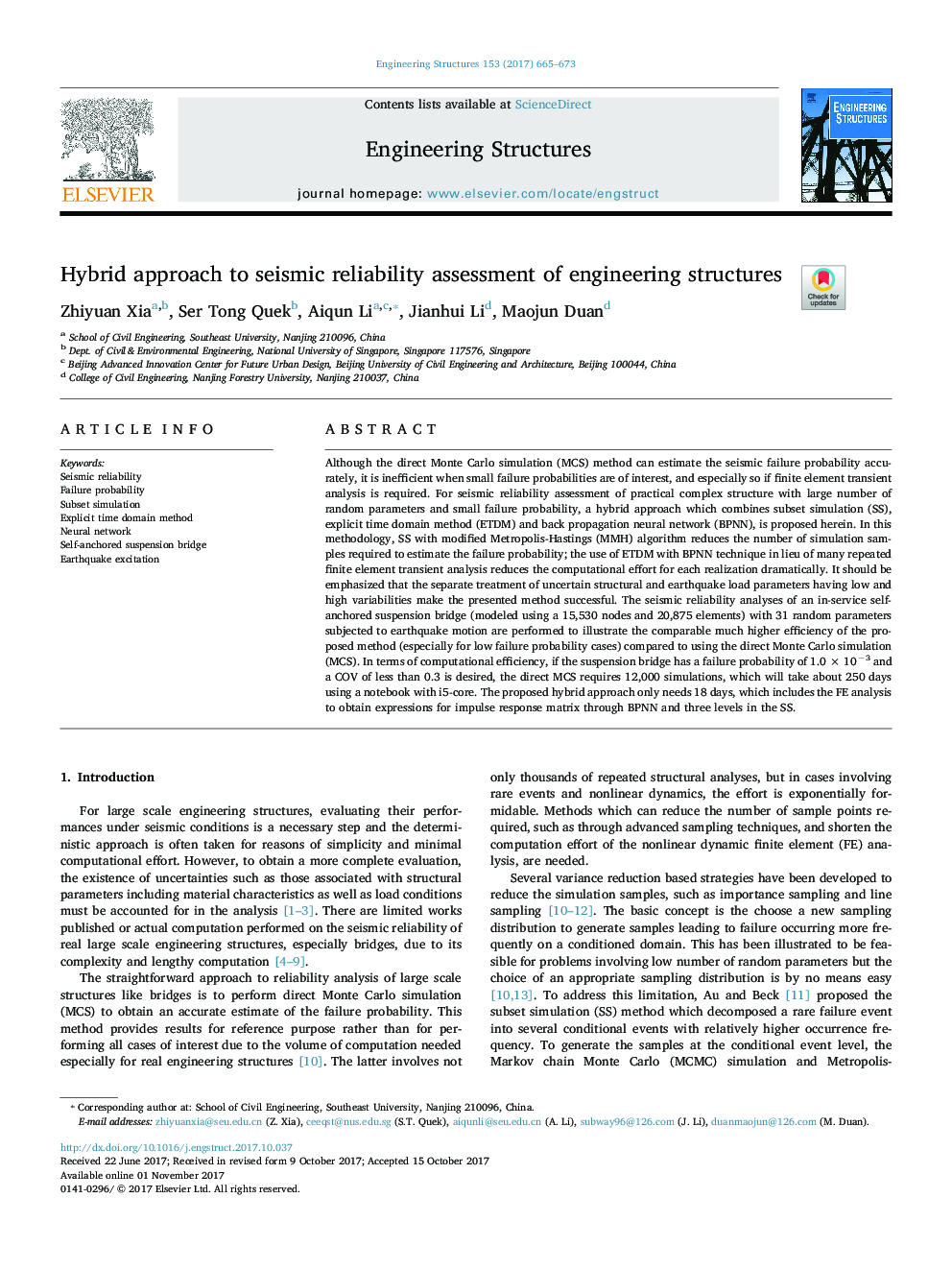| کد مقاله | کد نشریه | سال انتشار | مقاله انگلیسی | نسخه تمام متن |
|---|---|---|---|---|
| 6739405 | 1429074 | 2017 | 9 صفحه PDF | دانلود رایگان |
عنوان انگلیسی مقاله ISI
Hybrid approach to seismic reliability assessment of engineering structures
ترجمه فارسی عنوان
رویکرد ترکیبی به ارزیابی قابلیت اطمینان لرزه ای سازه های مهندسی
دانلود مقاله + سفارش ترجمه
دانلود مقاله ISI انگلیسی
رایگان برای ایرانیان
کلمات کلیدی
قابلیت اطمینان لرزه ای، احتمال شکست شبیه سازی زیرمجموعه، روش سنجش زمان دقیق، شبکه عصبی، پل تعلیق خودتنشی تحریک زلزله،
موضوعات مرتبط
مهندسی و علوم پایه
علوم زمین و سیارات
مهندسی ژئوتکنیک و زمین شناسی مهندسی
چکیده انگلیسی
Although the direct Monte Carlo simulation (MCS) method can estimate the seismic failure probability accurately, it is inefficient when small failure probabilities are of interest, and especially so if finite element transient analysis is required. For seismic reliability assessment of practical complex structure with large number of random parameters and small failure probability, a hybrid approach which combines subset simulation (SS), explicit time domain method (ETDM) and back propagation neural network (BPNN), is proposed herein. In this methodology, SS with modified Metropolis-Hastings (MMH) algorithm reduces the number of simulation samples required to estimate the failure probability; the use of ETDM with BPNN technique in lieu of many repeated finite element transient analysis reduces the computational effort for each realization dramatically. It should be emphasized that the separate treatment of uncertain structural and earthquake load parameters having low and high variabilities make the presented method successful. The seismic reliability analyses of an in-service self-anchored suspension bridge (modeled using a 15,530 nodes and 20,875 elements) with 31 random parameters subjected to earthquake motion are performed to illustrate the comparable much higher efficiency of the proposed method (especially for low failure probability cases) compared to using the direct Monte Carlo simulation (MCS). In terms of computational efficiency, if the suspension bridge has a failure probability of 1.0Â ÃÂ 10â3 and a COV of less than 0.3 is desired, the direct MCS requires 12,000 simulations, which will take about 250 days using a notebook with i5-core. The proposed hybrid approach only needs 18 days, which includes the FE analysis to obtain expressions for impulse response matrix through BPNN and three levels in the SS.
ناشر
Database: Elsevier - ScienceDirect (ساینس دایرکت)
Journal: Engineering Structures - Volume 153, 15 December 2017, Pages 665-673
Journal: Engineering Structures - Volume 153, 15 December 2017, Pages 665-673
نویسندگان
Zhiyuan Xia, Ser Tong Quek, Aiqun Li, Jianhui Li, Maojun Duan,
